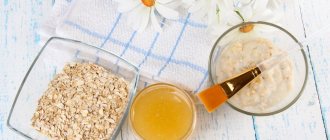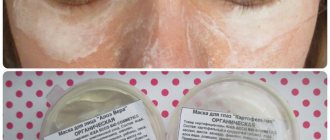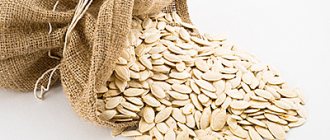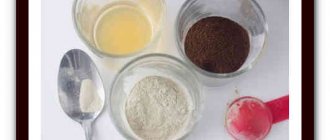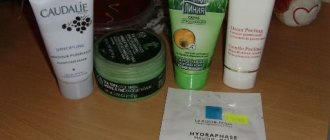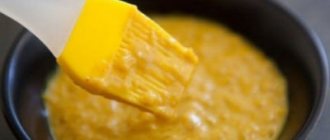Vegetables that are familiar to us all help solve a wide variety of skin problems and sometimes cope with them more effectively than some medications.
Eggplant
Eggplant is known for its whitening properties and is used to lighten age spots and freckles. To do this, a paste of fresh eggplant pulp is applied to the face for 20 minutes, after which it is washed off with warm water. A toning eggplant mask is prepared from a mixture of a tablespoon of gruel with the same amount of grated apple puree. Regular use of eggplant masks gives the desired effect.
Carrot
It is well known how rich carrots are in vitamins such as provitamin A, E, PP, C, K, as well as microelements that nourish the skin and prevent its aging. In addition, carrot juice perfectly copes with inflammatory processes and improves complexion.
To prepare the mask, carrots are finely chopped and mixed with sour cream and egg yolk. The resulting paste is applied to the face and neck and left for 20 minutes. The course consists of 20 procedures, which are carried out twice a week.
Cucumber
Fresh cucumbers are a wonderful remedy for dry skin. They tone, whiten and nourish, relieve inflammation and eliminate sagging skin. Cucumbers are rich in microelements and vitamins C and B. Cucumber masks are made daily and prepared with various components, depending on skin type.
For dry skin
The mask is made from fresh cucumber pulp, mixed in equal proportions with sour cream or yolk.
For oily skin,
grated cucumber gruel is mixed in half with egg white or lemon juice. Inflammations on oily skin are treated with a mask of cucumber pulp in equal parts with grated apples. The masks are applied to the face for 20 minutes, the approximate course of treatment is two weeks.
Tomatoes
Tomatoes are rich in antioxidants - vitamins A, E, C. In addition, they contain vitamins PP, K, group B, and microelements such as potassium, magnesium, phosphorus, iodine, iron, cobalt, sodium and others. Tomato masks have an anti-inflammatory and soothing effect, relieve the skin of acne, redness and pigmentation, and tighten pores. Organic acids in tomatoes make facial skin elastic and soft, refresh and promote cellular restoration.
Tomato mask for inflammation
It is prepared from the pulp of a small mashed tomato with the addition of thick sour cream. The mass is applied for half an hour, after which it is washed off with warm water.
For dry skin
The mask is made from the pulp of 1 tomato with the addition of a few drops of olive oil and one egg yolk. This mask is good for aged, thin skin with flaking.
For oily and porous skin
prepare a mask from the pulp of one tomato and potato (the second option is from the pulp of a tomato and two tablespoons of potato flour.)
Leave the masks on the face for 15 minutes, then wash off with warm water. The frequency of use of tomato masks is 2-3 times a month.
Of course, you can simplify the process and use classic masks
from the indicated vegetables. To do this, vegetables are cut into thin slices and applied to cleansed facial skin. Cover the top with a thin napkin to secure the slices. In any version, a vegetable mask will have undoubted benefits - it will refresh and nourish the skin, give it a healthy appearance, smoothness and velvety.
A proper and healthy diet cannot exist without eating vegetables. They are of particular value for the human body, as they have a huge amount of nutrients and beneficial substances. Vegetables remove toxins from the body, improve the functioning of internal organs and much more.
To get the most out of vegetables, you can use them as face masks. These masks are quite simple to make, but the effect after them is simply amazing!
After using such masks, the skin becomes smooth, fresh, and pigment spots disappear. She seems to glow from within. Facial skin cells are rejuvenated. In this article you will get acquainted with many recipes for vegetable masks.
Cabbage face mask
Even in antiquity, cabbage leaves were used to treat abscesses, purulent wounds and burns. The fact is that this vegetable has the amazing property of relieving inflammation, drawing out infection from the deep layers of the skin. A cabbage face mask is available at any time of the year. But, naturally, it is especially useful in the spring, when the leaves are young and soft.
This vegetable combines the invaluable properties of vitamins (A, C, group B), fiber and phytoncides. Most often, cabbage leaves are used externally to treat acne, nourish and refresh the skin.
- Take a couple of leaves and chop them into pulp. Season the resulting puree with a teaspoon of honey, the same amount of yeast and fresh apple juice (50 ml). The procedure lasts a quarter of an hour.
- Make cabbage puree by first boiling it in milk. Spread a homogeneous paste over your face and leave for 20 minutes.
- To moisturize the epidermis, take a scalded cabbage leaf and immerse it in vegetable oil. Apply it to your face and hold for 15 minutes.
Cabbage mask - to tighten large pores
To prepare a face mask, you will need to take two leaves of regular white cabbage and scald them to make them softer. After this, the “burdocks” need to be blotted, removing excess moisture, and spread with olive oil. Apply the cabbage to your face, trying to avoid the delicate area around the eyes, and hold for 13-18 minutes, then wash with clean filtered water. Such procedures perfectly tighten pores, making the skin even, silky, smooth and beautiful. The optimal course is 8 masks with an interval of 4 days.
Onion face mask
Onion face mask is used in the fight against wrinkles, age spots, abrasions, hematomas and acne. Such therapy is as cheap as it is effective.
- This recipe has been preserved since the time of Avicenna. Make a puree of onion, cabbage, black radish, dill and garlic, taken in equal parts. Mix until smooth and spread over your face. This onion mask perfectly smoothes and nourishes.
- Squeeze the juice from the onion, combine it with honey, white lily juice and white wax (these ingredients are sold at the pharmacy). The proportions must be equal. Steam the mixture and spread it over the wrinkles. Wash off after 3 hours. Onion therapy is considered cutting edge in the field of rejuvenation.
- Mix young onion juice and olive oil (1:1). Combine the mixture with the yolk. Keep the mask on for half an hour.
- A mask made from onion and fresh lemon juice/apple cider vinegar perfectly heals problem skin. The components are taken in equal proportions.
Onion therapy is extremely effective, but leaves an unpleasant odor. Consider this before important events.
Homemade bee bread face masks
Recently, face masks made from beebread have become popular. This beekeeping product has extraordinary capabilities to smooth out even quite deep wrinkles. In addition, unlike pollen and honey, the beebread mask is completely hypoallergenic. This means you can enjoy the anti-aging effect without side effects. This miracle product contains many vitamins and microelements.
- Combine beebread and honey in equal parts, diluting the mass with a small amount of warm water. Apply the composition as usual and leave for 20 minutes. This bee bread mask has an equally beneficial effect on both dry and oily skin.
- By replacing water with sour cream in the previous recipe, you will get an excellent remedy for wrinkles and aging.
- Supplement the mixture of bee bread and honey, taken in equal parts, with propolis (1/3 part) and use it in the fight against acne.
Zucchini face mask
Few people know about the antiseptic properties of zucchini. For many, it is just a tasty vegetable. The presence of manganese in fruits provides an excellent healing, restoring and smoothing effect. Therefore, zucchini masks can be used for both oily and sensitive and mature skin. Use the juice and pulp of this melon for home beauty treatments.
- Combine the zucchini pulp with honey and spread over the skin. The session lasts a quarter of an hour. The recipe is intended for fading epidermis.
- Puree the vegetable and add chopped oatmeal to the mixture. This mask treats acne.
- Squeeze the juice from the zucchini and mix it with the beaten yolk. Keep for 20 minutes. This option will help eliminate dryness and tightness.
- To restore a fresh look to your skin, relieve fatigue and get rid of swelling, use zucchini juice and strong coffee. Treat your face with the composition twice a day instead of tonic.
Brightening tomato mask
Tomato contains a high concentration of vitamins. Before applying a mask from this vegetable, test it on the back of your hand. Grind the tomato and some oatmeal. A couple of drops of lemon juice and the product is ready! It will even out skin tone, dry out inflammation and tone!
Rice face mask
It is not for nothing that rice face mask occupies a special place in the life of every Japanese woman. This cereal is useful both for internal use and for external therapy. Rice flour has an antioxidant effect, restoring skin cells.
- Grind the rice grains in a coffee grinder and dilute them with warm milk until creamy. Distribute the mixture over the face, neck and décolleté. Hold for 15 minutes.
You can also add vegetable oils, fermented milk products and honey to rice flour.
Everyone knows that vegetables should always be on our table as a source of food; natural plant products also bring considerable benefits to our skin. Self-prepared face masks from vegetables have a budget price and, most importantly, an excellent result: under their influence, the skin will become exactly the way you want.
The effectiveness of using vegetables as a cosmetic product
Man has learned to grow dozens of types of vegetables, each of them is unique, and their taste and quality composition varies. Despite this, vegetable masks are in any case distinguished by the versatility of their effects.
- Vitamins prevent fading and reduce cell aging. Vegetable masks contain B vitamins, ascorbic acid, and vitamin E.
- Microelements effectively stimulate energy processes in cells. Zinc, calcium, potassium protect the skin and prevent the appearance of cosmetic defects.
- Organic acids form protection against radicals and reduce harm from external negative factors.
Biologically active substances beneficial to the skin are found only in raw vegetables, which it is advisable to purchase from your homestead, where chemicals are not used for growing.
Indications for the use of vegetable masks
You can use vegetable face masks to get rid of a wide variety of blemishes on your face. In order to achieve the expected effect, you just need to choose the right garden vegetable.
- Grated carrots or freshly squeezed juice will get rid of dullness and pallor.
- Cabbage contains natural whitening ingredients and therefore will help get rid of pigmented spots and reduce the bright color of freckles.
- Tomatoes whiten the skin, exfoliate dead cells, and cleanse pores.
- Potatoes in any form will bring youth to mature skin.
- Masks made from pumpkin pulp will help cope with inflammation on the face and acne.
- Vegetable masks containing several ingredients at once will have a complex effect on cells.
Allergy is considered a contraindication to the use of vegetables as an external remedy. The prepared compositions are applied to completely cleansed skin; the effect will be greatly enhanced if the face is first steamed over warm steam.
Healthy vegetables for skin
You can carry out comprehensive skin care with your own hands, thanks to natural ingredients.
Useful properties of vegetables:
- potatoes give softness and velvety, have a lifting effect, smooth out wrinkles, improve the oval contour, and are indispensable for removing signs of fatigue and swelling;
- cucumber – refreshes, maximally saturates the skin with moisture, helps get rid of wrinkles and tightness of the skin, soothes inflammation, and effectively copes with age-related changes;
- bell pepper – in its composition contains the maximum number of elements to preserve the youth of the face, protects the epidermis from exposure to sunlight, increases immune properties, stimulates the acceleration of renewal processes;
- greens - will lighten freckles, age spots, moisturize and refresh, cope well with loss of firmness and elasticity, soften, soothe inflammation, give a beautiful, even complexion;
- peas - indispensable for cleansing and caring for oily, problem skin, it cleanses the ducts well, regulates the synthesis of sebaceous secretions, and gives the face an even matte shade;
- tomato – has a pronounced peeling effect, removes keratinized epithelium, improves oxygen saturation, helps get rid of age and photo pigmentation, the skin looks younger, becomes soft and elastic;
- pumpkin – refreshes the skin, saturates it with vitamins and minerals, is effective against inflammation and peeling, is useful in the treatment of acne, stops the spread of infection, smoothes out facial wrinkles;
- radish - used in cleansing and moisturizing procedures, a traditional vegetable improves skin structure, evens out texture, strengthens thin capillaries;
- cabbage - allows you to cope with inflammation, ulcers, extensive foci of infections, thanks to its antiseptic properties, recommended for problematic, oily dermis;
- onions and garlic - used only on areas affected by acne, they effectively treat, stop the spread, and fight pathogenic microflora;
- zucchini - give freshness and youth to the skin, moisturize and nourish, soften, eliminate the appearance of fine wrinkles;
- eggplants - whiten pigmentation, correct age-related changes, tighten the contour, give a beautiful color;
- carrots - included in many express masks, which allow you to quickly remove signs of fatigue and insomnia, even out skin tone, cleanse and tighten pores.
Proven and simple recipes
Vegetables can be included in mask recipes in any season of the year, but it is preferable to use the spring and summer months. It is during this period that plant products contain more vitamins. All vegetables must be thoroughly washed and peeled, depending on the recipe, before use. Popular recipes differ in the mechanism of their effect on the face, and therefore, for ease of searching, they are divided into groups.
Moisturizing vegetable masks
- With pepper Ripe bell peppers must be crushed into a fine mixture and mixed with a spoon of olive oil.
- With radishes The pulp or juice of the radishes should be mixed with olive oil.
Whitening vegetable masks
- With rhubarb The pulp of the rhubarb root should be crushed and mixed with one spoon of cream and a spoon of rolled oats flakes.
- With cabbage Parsley, fresh cabbage and sauerkraut should be mixed in equal quantities. Then two spoons of mayonnaise are added to the mass, and the composition is applied to the face. After removing the mask, the face is additionally wiped with cabbage brine.
Cleansing vegetable masks
- With corn One spoon of corn flour should be mixed with whipped egg white.
- With celery Grate two stalks of celery on a fine grater, add a spoonful of cream, the same amount of walnut butter and a spoonful of oatmeal.
Anti-aging vegetable masks
- With horseradish: Mix equal amounts of chopped horseradish, egg yolk and cream.
- With tomato: Tomato pulp and avocado are mixed in equal quantities. The mask optimally eliminates wrinkles on the face.
Nourishing vegetable masks
- With artichokes Young artichoke stems need to be chopped and mixed well with two tablespoons of sour cream and one spoon of honey.
- With pumpkin A small piece of pumpkin without seeds or peel needs to be boiled and mashed to a puree. When warm, the pumpkin pulp is distributed over the face and neck. The mask not only nourishes, but also eliminates fine wrinkles.
Easy-to-prepare vegetable masks can be used up to three times a week. After doing 5-10 procedures, you will see that even without expensive cosmetics, your face can look fresh, toned and without signs of fading.
Throughout their adult lives, many women spend money on expensive creams and masks
, in order to get beautiful, clean, smooth and glowing skin. But, as experience shows, you can have beautiful and glowing skin with minimal costs.
The best recipes for vegetable masks
Numerous vegetable face masks are presented on the site and are divided into specific products. We bring to your attention unusual recipes for masks, the miraculous effects of which you probably didn’t even know.
MOISTURIZING
- From bell pepper
Grind a medium-sized bell pepper into a paste, add olive oil (1 tablespoon).
WHITENING
- From rhubarb
Mix rhubarb pulp (2 tablespoons) with cream (1 tablespoon) and chopped oatmeal (1 tablespoon).
CLEANSING FOR OILY SKIN
- From corn
Mix corn flour (a tablespoon) with egg white.
REJUVENATING
- From horseradish
Mix crushed horseradish, egg yolk and cream in equal proportions.
NUTRITIONAL
- From artichokes
Chop the young artichoke greens, mix in equal proportions with sour cream (2 tablespoons each) and add honey (2 teaspoons).
Rich in vitamins and microelements, vegetables for the face have undoubted benefits that should not be neglected in your daily skin care.
Throughout their adult lives, many women spend money on expensive creams and masks
, in order to get beautiful, clean, smooth and glowing skin. But, as experience shows, you can have beautiful and glowing skin with minimal costs.
Vegetable face masks
Raw vegetables are an excellent ingredient for making masks.
. When vegetables come into contact with the skin, they help balance and cleanse the skin and even out its tone. We offer several recipes for proven plant-based masks, using which you can get smooth, smooth and glowing skin.
Potato mask
Potatoes are a very good remedy for oily skin. Divide the potato into two halves and rub it gently onto the skin in a circular motion. Leave the potato juice on the skin for 15 to 20 minutes, then rinse with water. Potato juice absorbs excess oil and makes the skin glowing and soft. Potato juice also helps smooth out fine wrinkles. Applying a potato slice to the eyes helps reduce dark circles under the eyes.
Cucumber mask
Cucumber, in addition to its general positive effect on the skin, also has a whitening effect. To refresh your skin, take half a cucumber and squeeze the juice out of it. Apply this juice to your face and rinse with warm water after 10 minutes. Dry your face with a towel. To reduce puffiness, apply a cucumber slice to your eyes.
Lemon and cucumber juice in equal proportions help get rid of post-acne scars. Apply the mixture thoroughly to your face for 5 to 10 minutes, then rinse with warm water. This procedure must be carried out for at least two weeks.
Tomato mask
Divide the tomato into two equal halves and gently rub it in a circular motion onto the skin. Leave the tomato juice on your face for 7 minutes until it is completely dry, rinse with warm water. This procedure helps to get soft and glowing skin naturally.
Tomato, like potato, is used to treat oily skin. In order to close and shrink enlarged pores, you need to take a tablespoon of tomato juice and mix with a few drops of lemon juice. Apply the resulting mixture to your face for 7–10 minutes, rinse with water at room temperature.
Lemon mask
You can treat acne naturally by using lemon juice. Take the juice of half a lemon and using a cotton swab, apply it to your face. Leave the juice on your face for 10 minutes and rinse with cold water. Use lemon juice for at least two to three weeks and you will see that your skin becomes clearer. For internal cleansing and detoxification of the body, it is recommended to drink plenty of water mixed with lemon juice.
simple recipes into practice
Over time, you can give up expensive creams and lotions, giving preference to
cosmetic procedures
that use a herbal base.
The basis of a healthy diet is the regular consumption of fresh vegetables, because these foods are valuable for their nutritional properties. And, if everyone knows about this, then the fact that they are also very useful is known to not many of us. As a rule, they are considered quite simple, which cannot be said about the result after their use. Such mixtures guarantee very high quality and fast results.
Rules for the use and application of masks
Homemade masks have undeniable advantages, but it is equally important to learn how to use them correctly. Therefore, to make your skin healthy and beautiful, you should follow simple recommendations.
Important advice from the editors
If you want to improve the condition of your hair, you should pay special attention to the shampoos you use. A frightening figure - 97% of shampoos from well-known brands contain substances that poison our body. The main components due to which all the troubles on the labels are designated as sodium lauryl sulfate, sodium laureth sulfate, coco sulfate. These chemicals destroy the structure of the curls, the hair becomes brittle, loses elasticity and strength, and the color fades. But the worst thing is that this nasty stuff gets into the liver, heart, lungs, accumulates in organs and can cause cancer. We advise you not to use products that contain these substances. Recently, experts from our editorial team conducted an analysis of sulfate-free shampoos, where products from Mulsan Cosmetic took first place. The only manufacturer of completely natural cosmetics. All products are manufactured under strict quality control and certification systems. We recommend visiting the official online store mulsan.ru. If you doubt the naturalness of your cosmetics, check the expiration date; it should not exceed one year of storage.
Rules for creating and using masks from vegetables:
- Prepare only from fresh, high-quality products; it is advisable to use each vegetable in its season;
- You can grind vegetables using a grater or blender; the juiciest types will work even if they are cut into thin slices;
- Masks made from vegetables and fruits must be used regularly, taking advantage of natural diversity, then you can achieve a lasting result - beautiful well-groomed skin;
- It is necessary to prepare immediately before application; it cannot be left until the next day; the absence of preservatives makes a natural cosmetic product a perishable product;
- It is imperative to check the composition for a possible allergic reaction; you need to apply a small amount to your wrist and wait about half an hour;
- After allergies have been ruled out, it can be used on the face, neck, and décolleté;
- The skin is thoroughly cleansed, and a steaming compress should be used periodically;
- The mask is applied with smooth movements, following the massage lines, the eyelid and mouth area is usually avoided;
- Depending on the purpose of the procedure, the time ranges from ten minutes to half an hour;
- You can wash off with mineral water, green tea or a decoction of your favorite herbs.
How to achieve maximum effect after a face mask made from vegetables?
Easy enough! Preparing such mixtures is simple: grind the product of your choice on a grater or in a blender. If you don't have much time, you can prepare the simplest masses using quick formulations that act immediately. Their use can be combined with other home activities.
Remember to apply vegetable face masks
It is necessary to apply a very thin layer, avoiding the triangle area around the mouth and circles under the eyes. Application time should not exceed 30 minutes. Any selected composition should be washed off with warm boiled water. This will help achieve maximum effect.
- Potato
— Zucchini
If you have a normal type, you can repeat this face mask made from vegetables.
3-4 times a week. Take one young zucchini and cut it into thin strips - that's it, ready. Place the strips on your face and neck area and hold for a quarter of an hour. After this, wash your face with warm water. This recipe not only nourishes with nutrients, but also promotes refreshment.
- Celery
Celery masks are rightfully considered cleansing, nourishing and indispensable for normal and dry skin types. Use 2 stalks of celery, 1 tsp. cream, 1 tsp. walnut oil and 1 tbsp. oatmeal Grate the stems on a fine grater, add cream, butter and flour, mix all ingredients and apply for 20 minutes. Rinse off with warm water.
- Onion
Use these vegetable face masks
to remove existing wrinkles and prevent new ones. To prepare such a medicinal mixture, you need to mix onion juice, white wax and white lily flower juice in equal quantities. Heat the mixed ingredients in a clay vessel over low heat, wait until the mixture cools down and apply it for a quarter of an hour. Rinse off any remaining residue with warm water.
- Bell pepper
So, to prepare a sweet pepper mask, take 1 meaty vegetable, 1 tsp. honey, 1 tsp. milk and 1 tbsp. flour. Use a blender to puree the peppers and then add the remaining ingredients. The mass may turn out either too thin or too thick, depending on the consistency of the honey used. Apply the mixture with a cotton swab and leave it on for 15 minutes. After use, rinse everything off with warm water.
- Parsley
This is another possible ingredient for. If you have an oily type, you can mix 1 tbsp. carefully chopped parsley with 2 tbsp. kefir, yogurt or yogurt. Apply the prepared mixture and leave for 15-20 minutes. Rinse everything off with cold boiled water. This way, you will eliminate oily shine.
If you have a dry/normal type, chop a small amount of parsley and mix the main ingredient with 1 tbsp. cottage cheese and 1 tsp. milk. Apply and leave the mixture for 10 minutes. Then rinse everything off with warm water. More details and...
- Beetroot face masks.
Each vegetable is useful in its own way, and the gifts of nature reveal their potential even when used externally. Vegetable face masks can be prepared all year round. By alternating recipes, you will get rid of many skin imperfections.
Rejuvenation of aging skin with masks made from fruits, berries and vegetables
**Strawberry. Turn 4-5 ripe strawberries into porridge, add a table to it. l. fat kefir. After half an hour, remove the mask with a napkin soaked in heavy cream. And after another 5 minutes, wipe your face with your usual lotion.
**Cabbage. For this mask, take the juiciest and freshest cabbage leaves (preferably from the middle of the head of cabbage). Grind the leaves with a blender or through a meat grinder. This paste can be applied independently, or add a few drops of any vegetable oil to it, or natural cream if your facial skin is dry. After twenty minutes, you need to wash off the mask and apply a nourishing cream.
**Potato. Potatoes are used boiled in milk. Make a puree with added cream and apply to your face. You can use raw potatoes. Rub and spread the paste on your face. The main condition is to use only young potatoes. After 20-30 minutes. The mask is washed off with warm water.
**Apple. Bake a sweet and ripe apple to make porridge. Add olive oil or cream (not a full teaspoon) to the cooled apple porridge. If the porridge is too liquid, add a little flour to it. The procedure lasts no more than half an hour, then rinse off the mask with warm water.
As you can see, masks made from fresh fruits and vegetables are very simple and affordable - after all, all the ingredients are familiar to us, and buying them will not be difficult. We apply everything we can eat to our face!
Helpful information
Vegetables of different types contain a special combination of vitamins, organic acids, minerals and other useful elements. Due to this, their effect on the skin is different. With a high content of vitamin C, masks whiten and rejuvenate the skin (the leaders are fermented,). With a high concentration of carotene, vegetables improve complexion - and are the leaders here. Starchy vegetables are soothing to the skin - just one example.
Masks should be applied to cleansed and steamed skin. The duration of exposure is on average 20 minutes (if a burning component is used, for example, juice or, then the time can be reduced to 10 minutes). After washing, apply cream to the skin. Procedures should be carried out at intervals of 1-3 days (it makes sense to alternate masks so that the skin receives complete care). Before using the mask for the first time, it doesn’t hurt to do a test on a small area of skin.
Vegetable masks for wrinkles and age spots
Crush the boiled potatoes, mix with the yolk and add a little cream (to the desired consistency). Pour in 1 tsp. horseradish juice Stir.
- With sauerkraut
2 tbsp. Grind the sauerkraut, add 20 drops of vitamin E and the same amount of camphor oil.
Vegetable masks at home - nutritional recipes
- With bell pepper
Remove the seed from the small red bell pepper and chop in a blender. Add 1 tbsp. almond oil.
- With spinach
Combine a quarter cup of puree with the yolk and 1 tsp. honey
Rejuvenating vegetable masks for facial skin
- With onion
Combine 30 ml of olive oil and half the amount of young onion juice. Pour the mixture into the yolk, stir, thicken with cornstarch.
- With Jerusalem artichoke
Squeeze the juice out of the pulp, combine with castor oil and thick sour cream (2:1:1).
Purifying vegetable face masks
- With white cabbage
Prepare a puree from equal parts of fresh white cabbage, measure 2 tbsp., add 1 tbsp. cream, thicken with oatmeal.
- With corn
Grind the young corn kernels and combine with lightly beaten egg whites.
Vegetable masks for acne
- From zucchini
2 tbsp. combine the pulp with 1 tsp. honey and oatmeal crushed into flour.
- From Jerusalem artichoke
1 tbsp. Combine Jerusalem artichoke slurry with lemon juice (1 tsp).
Vegetable masks for dry skin
- From cucumbers
Apply the paste on your face and cover with a fabric mask.
- From zucchini
Combine zucchini juice, rose water and cream in equal proportions, thicken with starch.
Vegetable masks for combination skin
- From tomatoes
Remove seeds and peel, process in a blender, add 1 tsp. olive oils.
- From lettuce leaves
Combine equal parts of the leaf pulp and sour cream.
Vegetable masks for a good complexion
- From carrots
Process a couple of small young carrots of the palest color in a blender, adding 1 tbsp. soybean oil and yolk.
- From pumpkin
Process the raw pale pumpkin pulp in a blender. Combine with cranberry juice and honey (2:1:1).
Vegetable masks for oily skin
- With green peas
Grind a few young pods, dilute the pulp with sour milk.
- With garlic
Grind low-fat cottage cheese (2 tbsp), add crushed cloves, dilute with unsweetened yogurt.
Whitening vegetable masks
- From dill
Combine 1 tbsp. cucumber juice and finely chopped, add 50 ml of natural white wine, let stand for a day. Wet the gauze mask and apply it to your face.
- From parsley
1 tbsp. chop finely, combine with yolk and lemon juice (0.5 tbsp).
Cook all vegetables based immediately before use - every minute of storage reduces the benefits of the product.
Experiment with ingredients - through experience you will understand which vegetable mask brings more benefits to your skin. © When copying site materials, keep an active link to the source.
